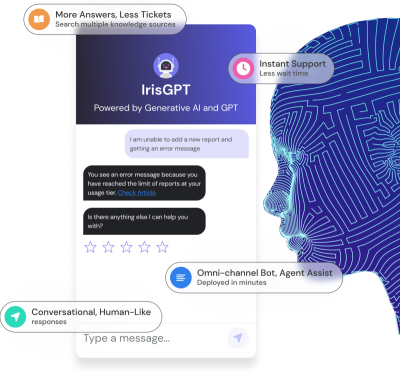Understanding Customer Sentiment Analysis & Upgrading Customer Support
Introduction
Every customer support team understands that customer sentiment is crucial in delivering quality support. However, with thousands of customers reaching out to support teams daily, it becomes almost impossible to analyze and understand customer needs or satisfaction. This is where customer sentiment analysis comes in, as it enables support teams to understand customer sentiment, preferences, and needs, which can improve the quality of customer service provided.
In this article, we will delve deeper into customer sentiment analysis, what it entails, its importance to customer support teams, and how directors of customer support can optimize it.
What is Customer Sentiment Analysis?
Customer sentiment analysis is the process of identifying, extracting, and analyzing customer opinions, feedback, and emotions toward a product, service, or brand. It utilizes various techniques such as natural language processing, text analytics, machine learning, and big data to categorize and understand customer sentiment. With these techniques, customer support teams can extract insights from customer feedback and make informed decisions on improving their services.
The Importance of Customer Sentiment Analysis in Customer Support
Customer sentiment analysis helps customer support teams understand the specific needs of their customers, their pain points, and the positive feedback that they receive. Through this, they can tailor their services and support to meet the individual needs of their customers better. By analyzing customer sentiment, support teams can also identify any issues early on and proactively address them before they escalate. This reduces the likelihood of negative reviews, complaints, and support tickets.
How to Optimize Customer Sentiment Analysis
To optimize customer sentiment analysis, customer support teams should work on integrating the process into their workflows. This involves investing in technologies such as customer feedback platforms, social media listening tools, and chatbots that can extract customer feedback automatically and improve customer data collection. Customer support teams should also review and analyze customer data regularly to identify potential issues in real time and take a proactive approach to problem-solving.
Ways to Leverage Customer Sentiment Analysis in Customer Support
Customer sentiment analysis can be used for a range of purposes. For instance, it can help customer support teams design better products and services, identify new or emerging customer needs, strengthen brand reputation and trust, and improve customer retention rates. By leveraging customer sentiment analysis correctly, support teams can also accelerate the resolution of tickets, improve response times, and more quickly resolve customer issues.
How can IrisAgent drive customer sentiment analysis?
IrisAgent can help analyze customer sentiment by leveraging natural language processing (NLP) techniques to process and understand text data, such as customer reviews, social media comments, or feedback forms. Here's how IrisAgent can assist in customer sentiment analysis:
Data Collection: IrisAgent can collect and aggregate customer feedback and reviews from various sources, such as social media platforms, review websites, emails, and surveys.
Text Preprocessing: Before sentiment analysis can be performed, text data often needs to be preprocessed. IrisAgent can clean and prepare the text by removing stop words, punctuation, and special characters, as well as performing tasks like tokenization and stemming.
Sentiment Analysis: IrisAgent can utilize sentiment analysis models to assess the sentiment of the text data. This involves determining whether the text expresses positive, negative, or neutral sentiments. Common sentiment analysis techniques include rule-based approaches, machine learning, and deep learning models.
Sentiment Classification: After analyzing the text, IrisAgent can classify customer sentiment into categories like positive, negative, or neutral. It can also assign a sentiment score or intensity to provide a more nuanced understanding of sentiment.
Real-time Monitoring: IrisAgent can monitor customer sentiment in real time, providing immediate insights into customer opinions and feedback, allowing businesses to respond to issues or capitalize on positive sentiment promptly.
Trend Analysis: IrisAgent can track sentiment trends over time, helping you identify patterns and changes in customer sentiment. This is useful for understanding how sentiment evolves and making informed business decisions.
Alerts and Notifications: IrisAgent can be configured to send alerts and notifications when specific thresholds or patterns in customer sentiment are detected, allowing businesses to take action quickly.
Conclusion
In conclusion, customer sentiment analysis is a vital tool for customer support teams wishing to improve the quality of their services and better match customer needs. It empowers teams by providing insights and data analytics over thousands of customer feedback and comments, enabling them to address issues before they escalate proactively. By making the best use of customer sentiment analysis, customer support teams can improve product and service design, strengthen brand reputation, and ultimately drive customer satisfaction and loyalty.
So, if you head a customer support team, start investing in technologies enabling you to leverage customer sentiment analysis and give your support the edge in providing world-class service.





